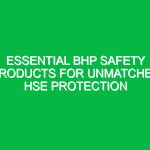Introduction to Front End Loader Safety
Hello team! Today, we’ll be discussing an essential topic that affects not just our productivity but also our Safety on the job site: Front End Loader Safety. As we prepare to use these powerful machines, it’s crucial to understand the Best Practices, potential Hazards, and safety Regulations involved. This toolbox talk aims to equip each of you with the knowledge to operate front end loaders safely and effectively, ensuring that everyone returns home safely at the end of the day.
Understanding Front End Loaders
Front end loaders are versatile machines commonly used in construction, landscaping, and other industrial applications. They are designed to lift, carry, and load materials, making them invaluable tools on any job site. However, with their size and power comes responsibility. Understanding the mechanics of these machines and how to operate them safely is paramount.
The Importance of Front End Loader Safety
Every year, there are numerous accidents involving front end loaders, ranging from minor injuries to severe accidents that can lead to fatalities. The importance of Front End Loader Safety cannot be overstated; it not only protects you and your co-workers but also minimizes downtime and financial losses for the company. By following the safety protocols discussed in this toolbox talk, you contribute to a culture of safety that Benefits everyone on the job site.
Identifying Potential Hazards
Before operating a front end loader, it’s essential to identify potential hazards. Here are some common risks associated with their Operation:
- Tip-Over Risks: Front end loaders can easily tip over if overloaded or operated on uneven ground.
- Collisions: Working in proximity to other equipment or personnel can lead to accidents.
- Struck-By Hazards: Loads can fall or swing unexpectedly, posing a risk to those nearby.
- Mechanical Failures: Lack of proper Maintenance can lead to equipment malfunction.
Recognizing these hazards is the first step in mitigating risks. Always be aware of your surroundings and ensure that your fellow workers are also in safe positions while you operate the loader.
Best Practices for Safe Operation
Now that we’ve identified potential hazards, let’s discuss Best Practices for ensuring Front End Loader Safety during operation:
Pre-Operation Checks
Before starting your front end loader, it’s essential to conduct thorough pre-operation checks:
- Check fluid levels (oil, fuel, hydraulic fluids).
- Inspect the tires for proper inflation and tread wear.
- Examine the loader’s hydraulic system for leaks.
- Ensure that all safety features, such as lights and alarms, are functioning.
By performing these checks, you can identify potential issues before they become serious problems.
Proper Loading Techniques
When loading materials, follow these guidelines:
- Never exceed the loader’s weight limit.
- Load materials evenly and avoid overloading the front.
- Always keep the load as close to the ground as possible for stability.
For example, imagine you are loading gravel into a dump truck. If you lift the load too high, the center of gravity shifts, increasing the risk of tipping. Always prioritize stability when loading.
Safe Driving Practices
When driving a front end loader, keep these practices in mind:
- Always wear your seatbelt.
- Drive at a safe speed, especially on uneven terrain.
- Use your horn when approaching blind corners or areas with limited visibility.
- Avoid sharp turns and sudden stops.
Consider a situation where you might be navigating a crowded job site. By adhering to these practices, you can avoid collisions and ensure that everyone remains safe.
Communication is Key
Effective communication is crucial on any job site. Always signal your intentions clearly to those around you, and establish a system of hand signals or radio communication to enhance safety. For instance, if you are about to reverse, ensure others are aware of your movements to prevent accidents.
Training and Certification
All operators of front end loaders must be adequately trained and certified. Training programs should cover:
- Theoretical knowledge about the machinery.
- Hands-on experience under supervision.
- Understanding safety regulations and compliance Standards.
Being trained not only enhances your skills but also boosts your confidence when operating heavy machinery. If you feel unsure about any aspect of operating a front end loader, speak up and seek additional Training.
Regulations and Compliance
It is essential to be aware of regulations and standards governing the operation of front end loaders. OSHA (Occupational Safety and Health Administration) has specific guidelines that all operators must follow to ensure safety. Compliance with these regulations not only keeps you safe but also protects the company from legal liabilities.
Familiarize yourself with the following:
- osha standards related to heavy equipment operation.
- Your company’s safety policies and Procedures.
- Reporting procedures for accidents or near misses.
Real-Life Examples
Let’s consider a real-life scenario. In 2021, a construction site reported an accident where a loader tipped over while trying to navigate a steep slope. The operator had not properly assessed the terrain or secured the load, leading to a preventable incident. This serves as a reminder of the importance of conducting site assessments and adhering to safe loading practices.
In another example, a worker was injured when a load unexpectedly shifted while being transported. The operator failed to communicate effectively with ground personnel, resulting in a lack of awareness about the loader’s movements. This incident highlights the critical need for clear communication and teamwork on the job site.
Engaging the Team
Now, let’s open the floor for discussion. I’d like to hear your thoughts on the following questions:
- What challenges have you faced while operating front end loaders?
- Can you share any experiences where safety protocols helped avoid an accident?
- What additional Safety Measures do you think we could implement on our job sites?
Your input is valuable in creating a safer working Environment. Let’s work together to develop strategies that enhance Front End Loader Safety.
Conclusion
To wrap up, always remember that safety is our top priority when operating front end loaders. By following the best practices discussed today, conducting thorough checks, and maintaining open communication, we can ensure a safer work environment for everyone.
Thank you for your attention and commitment to safety. Let’s keep these principles in mind as we head out to the job site. Together, we can make a difference in Front End Loader Safety and contribute to a culture of safety that prioritizes our well-being.


